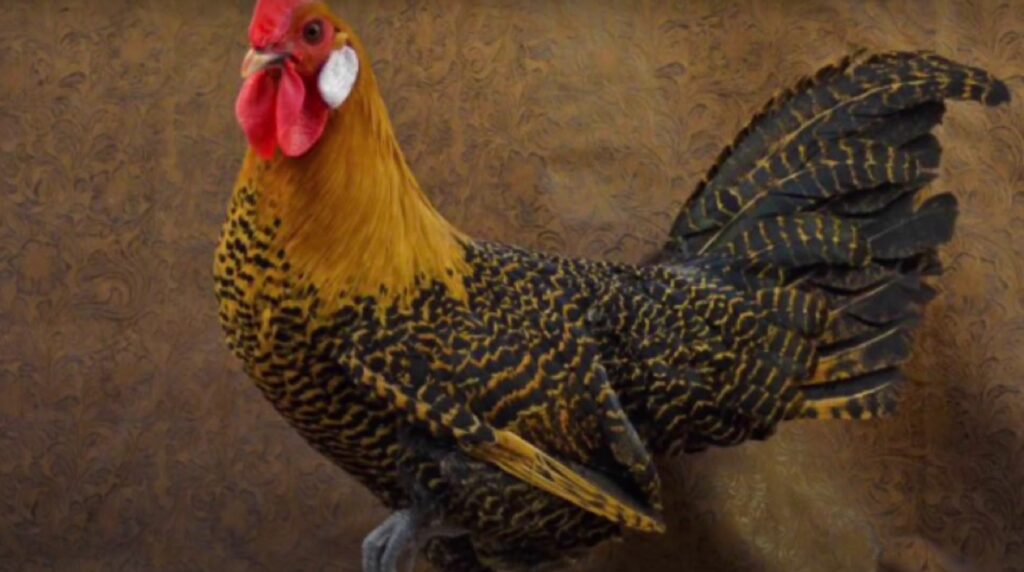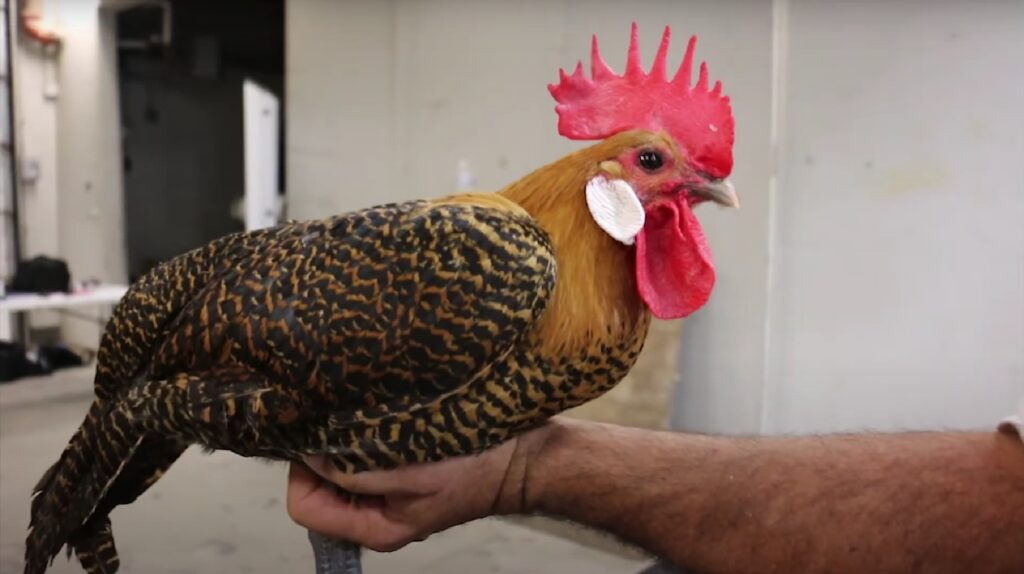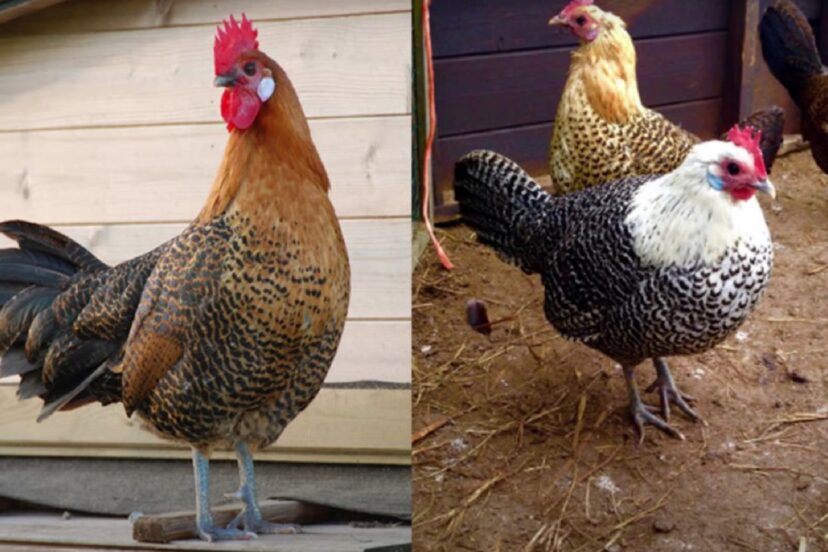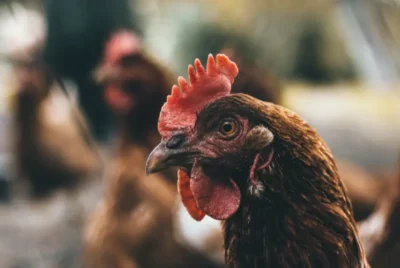The Campine Chicken Breed: Origin, Characteristics, and Care Essentials
Campine chickens come from a region between Belgium and the Netherlands. They’re known for their beautiful feathers and active personalities. Here’s a straightforward guide to what makes them special and how to care for them.
Origin and Development of Campine Chicken Breed
The Campine chicken breed originated in the Campine region of Belgium and shares its heritage with the Brakel, a closely related breed.
Its development can be traced back to the early 19th century when local farmers bred them for their egg-laying capabilities. Initially, there were two distinct types, the Campine and the Brakel, differentiated mainly by size.
Over time, breeders focused on refining the Campine’s features, leading to the smaller, more uniform bird we recognize today. The breed is known for its striking plumage, often silver or gold laced, and its active, foraging nature.
Despite its decorative appearance, the Campine was prized for its ability to lay a high number of eggs, making it a valuable addition to small farms. However, its popularity declined with the rise of commercial egg production, leading to efforts to preserve its numbers by poultry enthusiasts.
Physical Characteristics of the Campine Chicken Breed

Size and Weight
- Roosters: Typically weigh around 6 pounds (2.7 kg).
- Hens: Slightly lighter, with an average weight of about 4 pounds (1.8 kg).
Plumage
The Campine chicken is renowned for its striking plumage, characterized by two main color patterns:
- Silver Campine: Features a white or silvery base color with each feather showcasing precise, dark penciling. This penciling is a series of parallel dark blue lines that run down the length of each feather on pure white ground, creating a distinctive and elegant same pattern.
- Golden Campine: Has a golden-yellow base color, with the same type of dark penciling found in the Silver Campine. This results in a warm, rich appearance that’s equally striking.
Physical Features
- Comb: The Campine chicken sports a single comb with five points that stands upright, indicative of their alert nature.
- Leg Color: Their legs are a slate blue or gray color, which contrasts nicely with their unique plumage.
- Wattles and Earlobes: Like the comb, both are bright red, adding to the bird’s overall vibrant appearance.
- Body Shape and Posture: These chickens have a slim build with a relatively long back that slopes towards the tail feathers. The tail itself is medium height, contributing to their elegant and upright posture.
Temperament and Behavior of Campine Chicken Breed
The Campine chicken breed is lively and active temperament, making it an energetic presence in the backyard or on the farm. These chickens are curious and enjoy free-ranging, often foraging for their own food.
They are hardy and adapt well to various environments, but they can sometimes be flighty, making them more challenging to handle for those new to poultry keeping.
Despite their independent nature, Campines are not typically aggressive towards humans. Due to their active disposition, they thrive best when they have plenty of space to explore and forage.
Habitat and Living Conditions of Campine Chicken Breed
Campine chickens prefer an environment where they can roam freely, as their active and curious nature makes them excellent foragers. For housing, they need a secure coop to protect them from predators, but it’s important to provide them with ample outdoor space.
A run or fenced area where they can free-range, peck, and scratch in the ground is ideal. Each chicken should have enough space to move freely, with recommendations often suggesting at least 10 square feet of outdoor space per bird.
These chickens adapt well to a variety of climates, thanks to their hardy nature. They can tolerate both heat and moderate cold, although they should be provided with shade and fresh water during hot weather, and a dry, draft-free coop in colder conditions.
However, extreme cold can be challenging for them, so additional measures like insulating the coop or providing a heat source might be necessary in very cold environments.
Health and Care

Nutrition
Campine chickens require a balanced diet rich in proteins, vitamins, and minerals to maintain their vibrant plumage and support their active lifestyle.
A foundational diet comprising high-quality commercial poultry feed is essential, supplemented with greens, vegetables, and occasional protein sources such as mealworms to enhance dietary variety.
Adequate access to clean, fresh water is non-negotiable, ensuring hydration and physiological regulation.
Housing
They need a safe, ventilated coop with enough space to roam, perch, and lay eggs. Add an outdoor area for them to explore and exercise
Health Management
Regular vaccinations, as recommended by veterinary professionals, along with routine deworming, are central to a comprehensive health management strategy. Periodic inspections for external parasites, coupled with maintaining cleanliness within the coop and run, further reinforce disease prevention efforts.
Behavioral Needs
They’re active and curious. Give them things to climb on, peck at, and spaces to dust bathe to keep them entertained and happy.
Campine Chicken Egg Productivity

Egg Production Rate
On average, a Campine hen can produce about 3 to 4 eggs per week, which translates to approximately 150-200 eggs per year. This production rate can vary based on factors such as feed, environment, and overall health of the chicken.
Egg Color
Campine chickens lay eggs that are white to slightly cream in color. The eggs are of medium size, fitting for the breed’s size and type. Their color white-shelled eggs consistency makes them a reliable source for anyone specifically looking for white eggs for culinary or aesthetic reasons.
Broodiness and Mothering Abilities
Campine hens are not particularly known for their broodiness. In fact, they rarely go broody, which is a common trait among many heritage breeds and those selected for egg production.
This trait can be advantageous for those raising chickens primarily for egg production, as broody hens will stop laying eggs while they are sitting on eggs to hatch them.
Their lack of broodiness also means that if you’re looking to hatch Campine chicks, you might often need to use an incubator or a broody hen of another breed to hatch the eggs.
As for their mothering abilities, because they so infrequently go broody and hatch their own chicks, it’s harder to gauge. However, like many chickens, if they do end up raising chicks, they can be attentive mothers.
Conservation Status
The Campine chicken breed is considered to be at risk, with its numbers being relatively lower than more commercially viable chicken breeds. The exact conservation status can vary by region, but globally, it is generally listed among breeds that require monitoring and conservation efforts.
The current population trend for the Campine chicken indicates a need for increased awareness and conservation action to prevent further decline. Poultry enthusiasts and small-scale farmers play a crucial role in conserving this breed by choosing to raise Campine chickens, thereby maintaining breeding populations and promoting interest in the breed.
Their efforts help preserve the genetic diversity of the Campine chicken, which is vital for the breed’s resilience to diseases and environmental changes. Genetic diversity within the breed also ensures that Campines can adapt to various conditions and continue to thrive, highlighting the importance of conservation efforts aimed at safeguarding this unique heritage breed for future generations.
Final Thoughts
The Campine chicken is a breed rich in history and character. With their stunning plumage and vivacious personalities, they make a captivating addition to any flock. However, their care requires a bit of extra attention, particularly in terms of space and predator protection.
For those willing to meet their needs, Campine chickens can be a rewarding choice, offering a glimpse into a storied breed with deep European roots.




